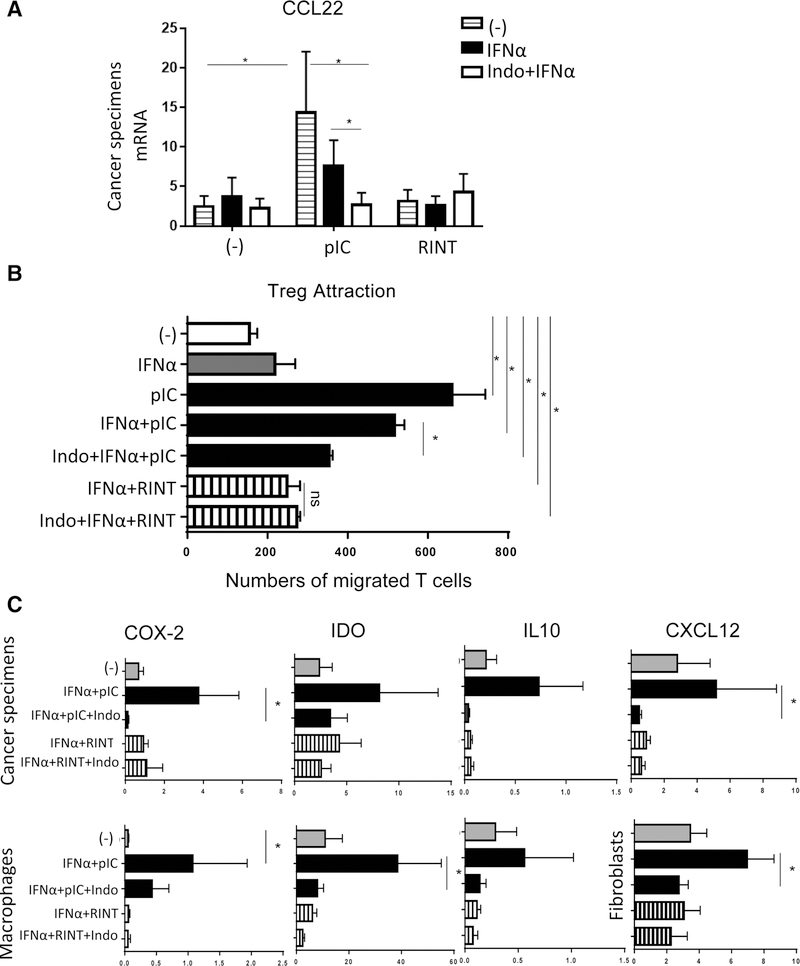Figure 4.
Combination of IFNα and indomethacin counteracts the induction of suppressive factors by poly-I:C. A, Undesirable CCL22 induction by poly-I:C (pIC) is partially suppressed by IFNα (which suppresses EP4; see Supplementary Fig. S5A) and abrogated by the combination of IFNα and indomethacin, down to the baseline levels observed with rintatolimod (RINT). Data from tumor samples from n = 8 patients. B, IFNα alone and the combination of IFNα and indomethacin suppress the ability of poly-I:C to promote Treg migration to the treated tumors (n = 5). C, Combination of IFNα and indomethacin (Indo) abrogates the induction of COX2– and COX2–dependent suppressive factors IDO, IL10 in poly-I:C–treated cancer specimen (n = 6), and macrophage cultures (n = 7). Because CXCL12 is not produced by human macrophages, human fibroblast cultures were used to evaluate CXCL12 induction (n = 5). Results (mRNA levels normalized for HPRT) are mean ± SEM. *, P < 0.05 (Wilcoxon signed-rank test).

